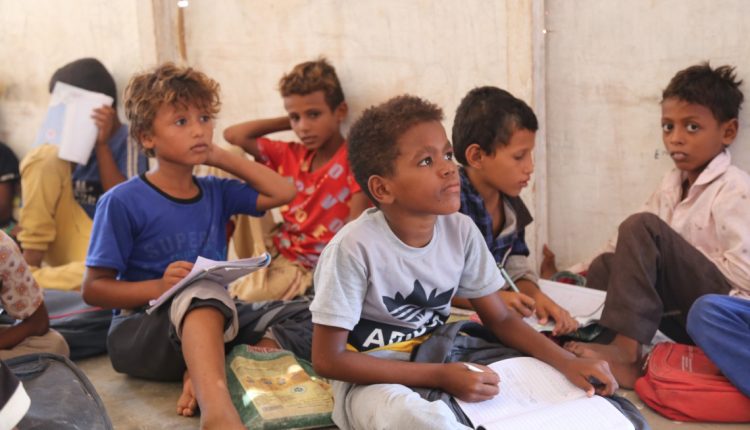Yemen: Conflict leaves millions of children without proper education
In Taiz, a teacher and schoolgirls have created an improvised classroom in the middle of the road, just across the street from their heavily damaged school. The striking scene summarizes the harsh reality of an entire generation of Yemeni children struggling to access education. The number of children experiencing disruptions to their learning as a direct or indirect consequence of the conflict is growing.
According to UNICEF figures, over two million children are out of school, over four million need support to access education, and over 20 per cent of all primary and secondary schools are closed.
Students and teachers have been killed or injured at or on their way to school, while a lack of salary has forced thousands of teachers to look for other work. The danger and economic impact of the conflict has also forced thousands of families to stop sending their children, notably girls, to school.
“My father lost his leg and arm and cannot work anymore, so all my siblings had to stop their education and find jobs instead,’’ saidAfaf, an 11-year-old girl living in a camp for internally displaced people in Hodeida. She is the only one in her family who goes to school. “I go to class but the school at the camp cannot pay salaries for teachers, so we rely on volunteers to teach.”
Schools in Yemen have not been spared during the protracted conflict. Over the last eight years, at least one out of every four educational facilities has been destroyed, damaged, or used for non-educational purposes. Under international humanitarian law, parties to a conflict must ensure that all necessary measures are taken to protect civilians and civilian infrastructure. Violence against students, education personnel and schools or universities causes long-lasting harm. It also hinders the recovery process once conflict ends.
“My previous school was on the frontline. I had to change schools and now have to walk an hour and a half to reach my new classroom every day,” said Ahmed, a 17-year-old boy from Taiz, home to one of Yemen’s longest-running battlefields, and where students have to navigate frontlines to reach school. “One time, my classmate was shot dead on our way to school. I was with him and it was horrific. I was covered in his blood and didn’t know what do.”
In the highly volatile context of Yemen where many children have only ever known life in conflict, safe access to education can alleviate the psychological impact of violence by offering children a sense of routine. Addressing Yemen’s education crisis requires a comprehensive and multisectoral approach that addresses all basic needs, as all essential needs are interconnected.

